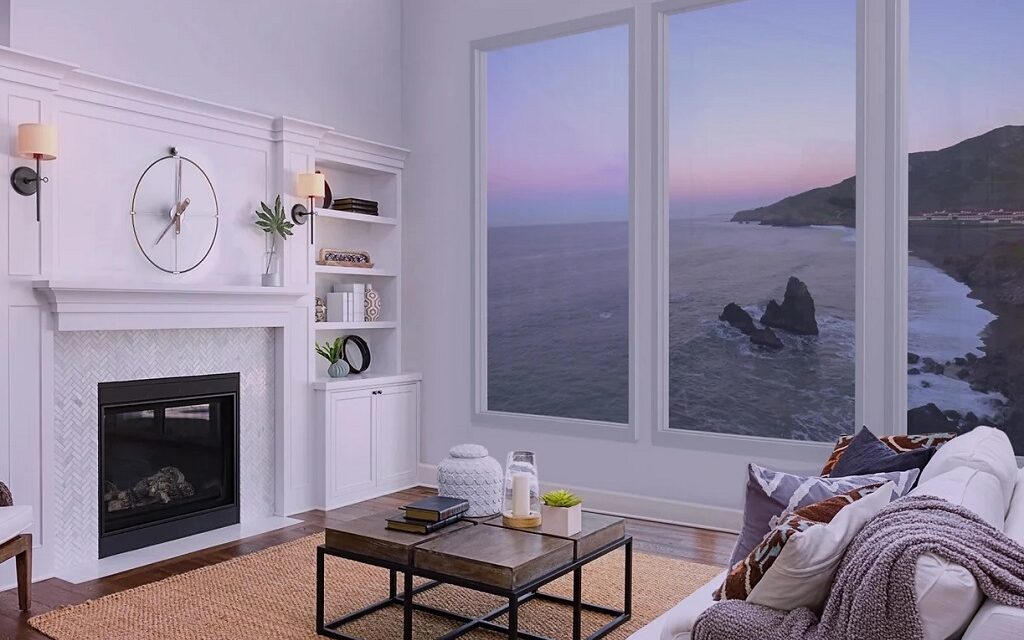The main photo showcases a three-panel panoramic virtual window with ocean view by LiquidView.
Virtual windows are another technological innovation impacting the world of home décor and home wellness. They can offer creative ways to transform any living space with stunning views and nurturing light when traditional windows are simply not a viable option.
But what are virtual windows and how do they work?
In this article, we dive into the latest trends, technology and options surrounding virtual windows and explore the many benefits they offer. From enhancing your home’s aesthetics to bringing the outdoors inside, virtual windows can positively change the atmosphere of any room or home, as well as the moods of its residents.
Let’s explore how virtual windows can transform your interior living spaces and create a beautiful environment in which you’ll love spending more time!
Table of Contents
- What is a Virtual Window?
- How does a Virtual Window Work?
- Benefits of Having a Virtual Window in Your Home
- Where Can You Purchase a Virtual Window?
- Frequently Asked Questions
- Closing Thoughts
Also see:
What is a Virtual Window?
A virtual window, also referred to as a digital window, fake window or artificial window, is a technology-enabled décor structure that simulates the appearance of a real window inside an interior space. In short, a virtual window is the art and science of creating the illusion of a window where there isn’t one.
A virtual window is the art and science of creating the illusion of a window where there isn’t one.
The long term promise of virtual windows is that every room in a home can have a view, per LiquidView’s current tagline:
Now Every Room Has a View
– LiquidView’s current corporate tagline
Virtual windows are ideal for spaces that lack natural light or have limited access to outdoor views, such as basements, converted attics, repurposed garages or long dark hallways. They are also a convenient option when the installation of a real window is simply not feasible (e.g. too much loss of privacy) or impossible (e.g. a shared wall between adjacent townhomes or condos).
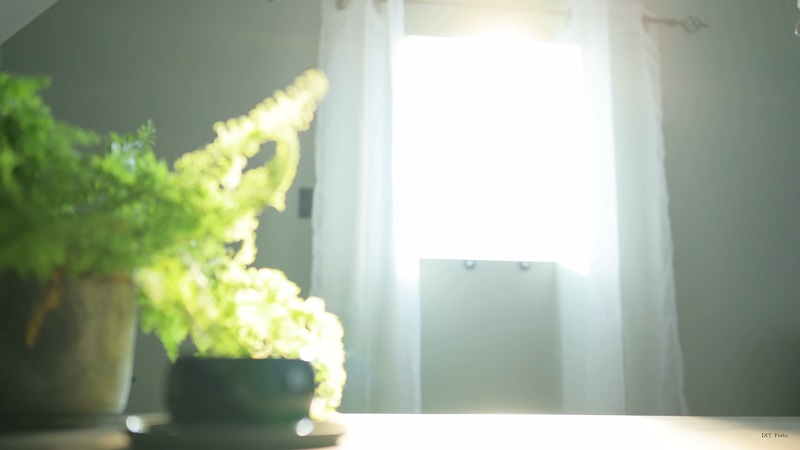
Screenshot of DIY Perks artificial sunlight window installation
We also expect to see rapid adoption of virtual window solutions by owners of investment rental properties as a way to enhance the value of “view- or light-challenged” properties, a common trait in difficult-to-rent apartments. Key to this adoption will be an emergence of quality plug-and-play products and services that are reliable, affordable and easy to maintain.
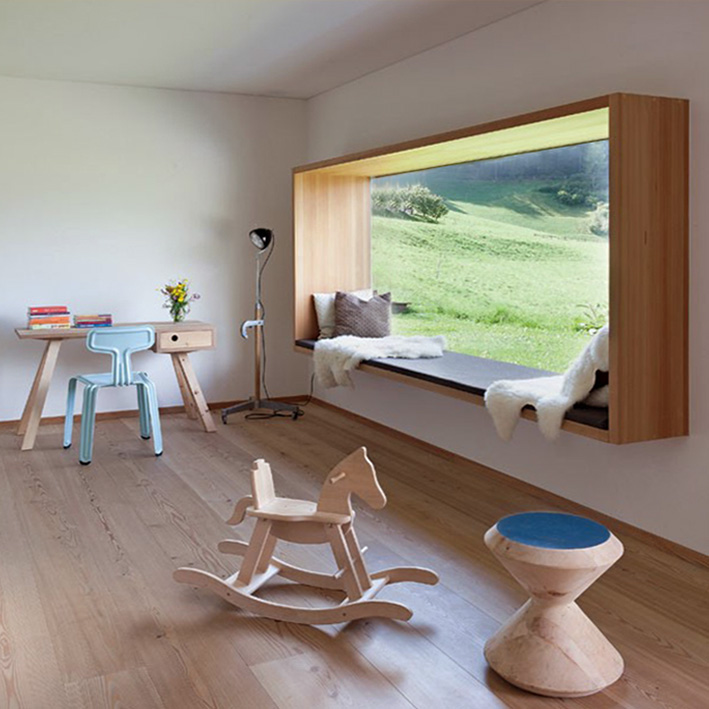
Frameless Fake Window by Prosky Panels
Though video and lighting technology are creating many intriguing possibilities for virtual windows, there are still lower-cost solutions that rely on basic technology that can still do an adequate job of transforming an interior space. For example, rudimentary low-cost examples of faux windows can consist of framed hi-res translucent photographic posters with LED backlighting, or even framed mirrors with overlaid grilles and window treatments. Rest assured there will be a growing number of varying options for residential applications in the coming years.
However, the latest iterations of innovative virtual window technology are what portend a truly interesting future for interior design applications. Virtual window innovation can be grouped into two distinct functional categories:
- Lighting that looks and feels like natural sunlight
- Dynamic outdoor scenery that looks real and synchronizes with your local time zone
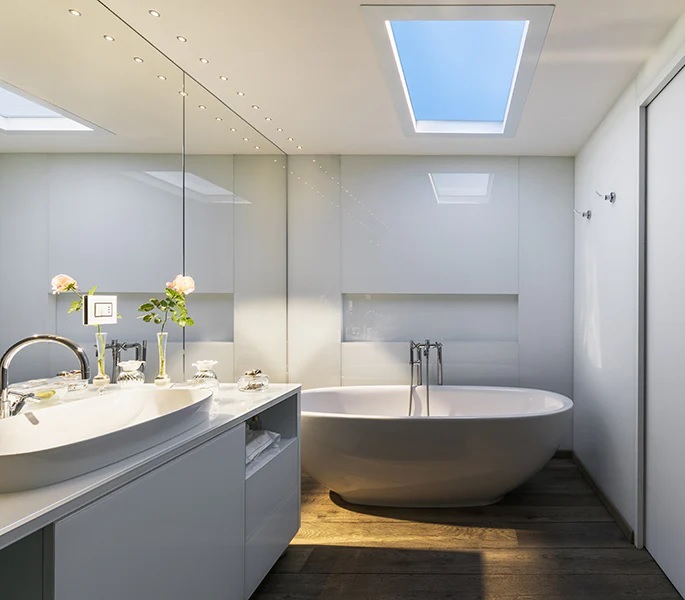
CoeLux Virtual Skylight in Bathroom
That said, virtual windows can be grouped into four loosely defined categories, according to their primary purpose or style:
- Basic: a low-tech approach with an emphasis on the window frame and window treatments (e.g. static photographic imagery with LED lighting)
- Artificial Sunlight: window units that simulate natural sunlight using advanced LED lighting technology (e.g. artificial skylights)
- Dynamic Outdoor Scenery: window units with highly realistic digital displays that can synchronize outdoor scenes with your local time zone and season
- DIY: a wide range of ingenious approaches to creating custom faux windows
How does a Virtual Window Work?
- Basic Virtual Windows
- Artificial Sunlight Virtual Windows
- Dynamic Outdoor Scenery Virtual Windows
- DIY Virtual Windows
Basic Virtual Windows
For current “low-tech” virtual window inspiration, we strongly recommending looking at retail display technology for ideas. Thanks to retailers having invested heavily in using LED lightboxes for in-store promotions, there are now a wide range of cost-effective options for homeowners to use, as well.
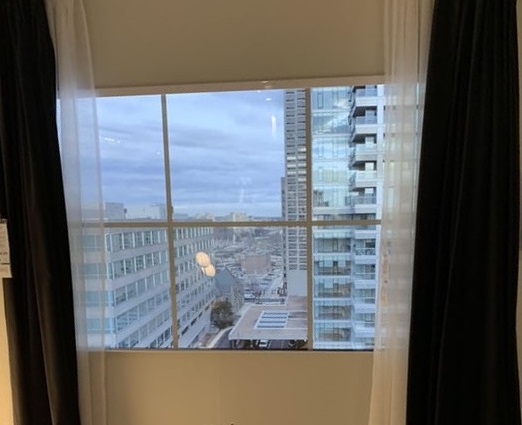
IKEA in-store fake window with cityscape view
To get familiar with basic possibilities definitely plan to visit contemporary furniture stores, such as Ikea, to go window shopping – literally! For example, more than a few visitors to Ikea have inquired online where they can purchase their fake display windows. When they discover that they are not for sale, they then ask how can they recreate this faux windows at home. In short, Ikea’s approach to fake windows is using LED light boxes overlaid with translucent photographic posters (likely printed in Duratrans film by Kodak).
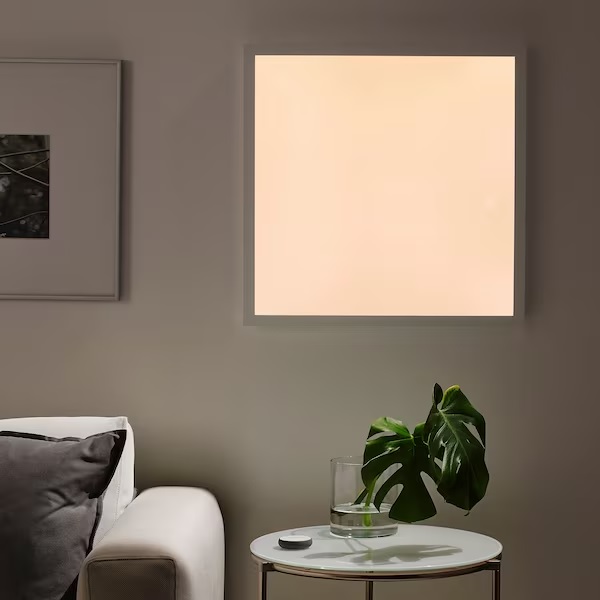
IKEA FLOALT LED light panel
Given that basic virtual windows leverage static imagery, you will want to make sure that it is easy and affordable to change out imagery over time. Keep in mind that several LED lightbox stores can print out custom photos, so you can integrate images of your immediate outdoor surroundings with your virtual windows, as well.
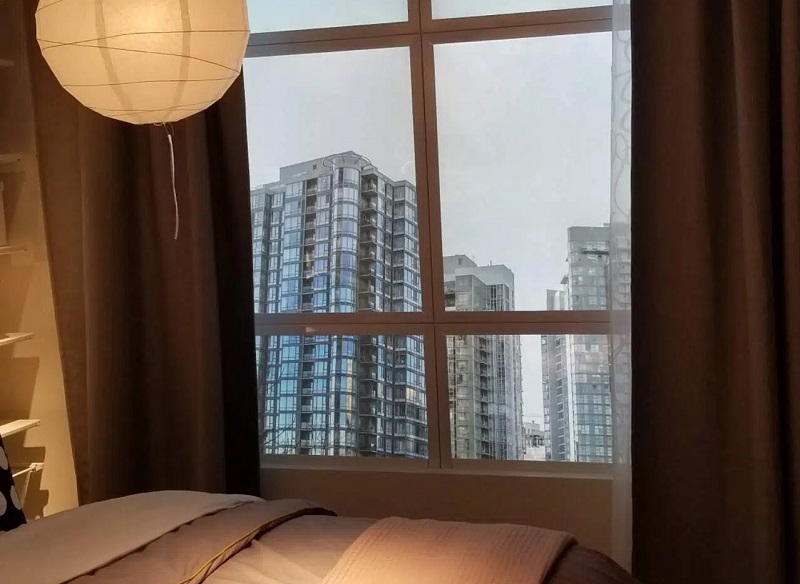
LED faux window with cityscape view by Prime Light Boxes
When searching for basic virtual window, here are search terms to use to find as many options as possible:
- LED Lightboxes
- Fake Windows
- Faux Windows
- LED Snap Frames
Here are several online stores where you can purchase basic virtual windows or LED lightboxes that can be turned into faux windows:
- LED Faux Windows by Prime Light Boxes
- Fake Windows by Prosky Panels
- IKEA FLOALT Dimmable LED Light Panels
- Daylite Windows & Backlighting Solutions
- Blue River Digital
- Custom Printed Dimmable LED Light Box Panels (SuperBrightLEDs.com)
- The Lightbox Shop LED Light Box Signs
Here are additional resources that can enhance a basic virutal window to look more realistic or stylish:
- Custom Backlit Film Posters
- New Panes Creations
- Window Grids on Etsy
- Universal Plastic Window Grille Kit
- YouTube Window Scenes Playlist
Artificial Sunlight Virtual Windows
Many consumers are looking for options to brighten a dark interior space primarily due to health reasons, and are less concerned about peripheral aesthetics that virtual windows can provide. This need for healthy lighting is a key part of overall home wellness and is often referred to as Human-Centric Lighting (HCL), as well as Circadian Lighting.
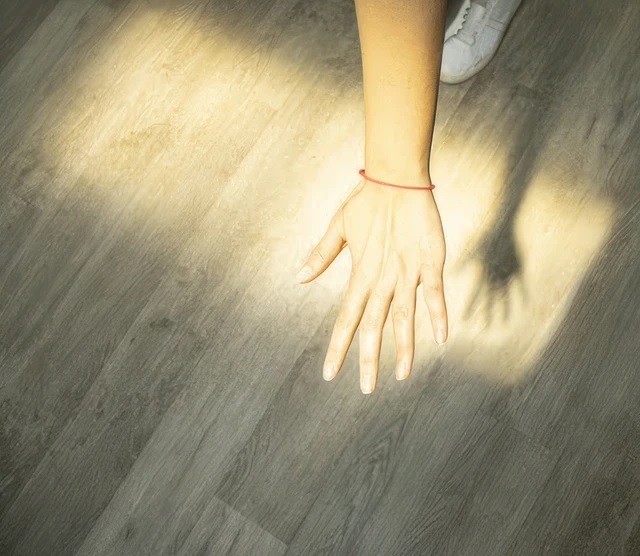
Shadow from artificial sunlight by Innerscene
“Wellness lighting” is not a trivial matter as US citizens spend approximately 90% of their time indoors according to the EPA. Persons that suffer from Seasonal Affective Disorder (SAD) (approximately 4% to 6% of the US population) can attest to how important it is to have sufficient lighting indoors during darker winter months.
Problematic lighting (e.g. too little or too much) can also impact sleeping patterns, as about 50 to 70 million Americans have sleep disorders according to the American Sleep Apnea Association (ASAA).
Fortunately the concept of virtual windows can also be applied to ceilings which is commonly referred to as virtual skylights, a popular approach for homeowners needing health-related supplemental lighting. Commercial installations of both virtual windows and virtual skylights have been in practice for many years as a wide-range of businesses have needed to address light-deprived interior spaces. This is especially true for businesses in the health and wellness industries, such as hospitals, dental offices, spas and senior living facilities, as proper lighting has been directly correlated to improved patient wellness and overall customer satisfaction.
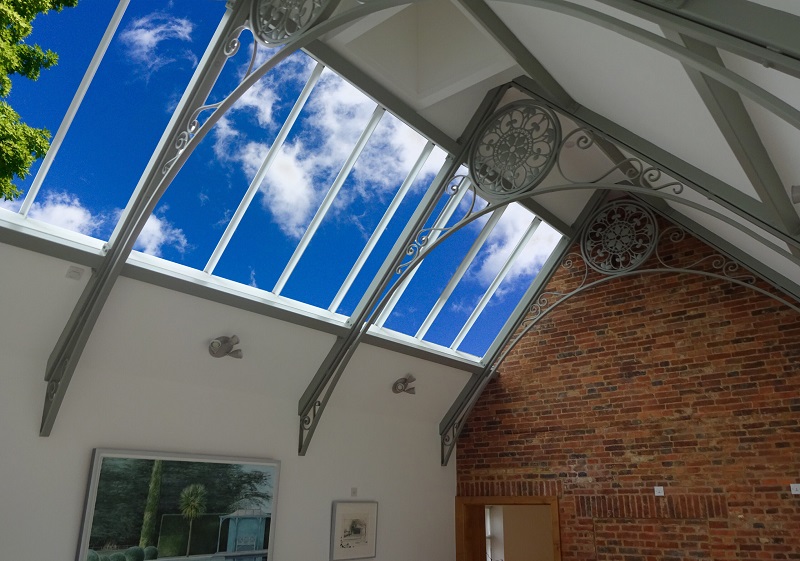
Artificial skylights in a residential attic by Artificial Sky
Similar in spirit to basic virtual windows that use static imagery, there are many choices for virtual skylights that using LED lighting with sky-like imagery to make a room feel brighter and more open.
CoeLux
A well-known disruptive innovator in the space of artificial sunlight is CoeLux, headquartered in Italy. CoeLux’s artificial sunlight is a revolutionary technology that mimics natural sunlight in indoor spaces. It uses advanced nanotechnology to create an artificial light source that replicates the depth, intensity, and color temperature of the sun’s rays. The result is a highly realistic lighting experience that can enhance the visual appeal of any interior space while also providing numerous health benefits for occupants. CoeLux lighting solutions have been used in a variety of settings, including museums, hotels, retail stores, and private residences.
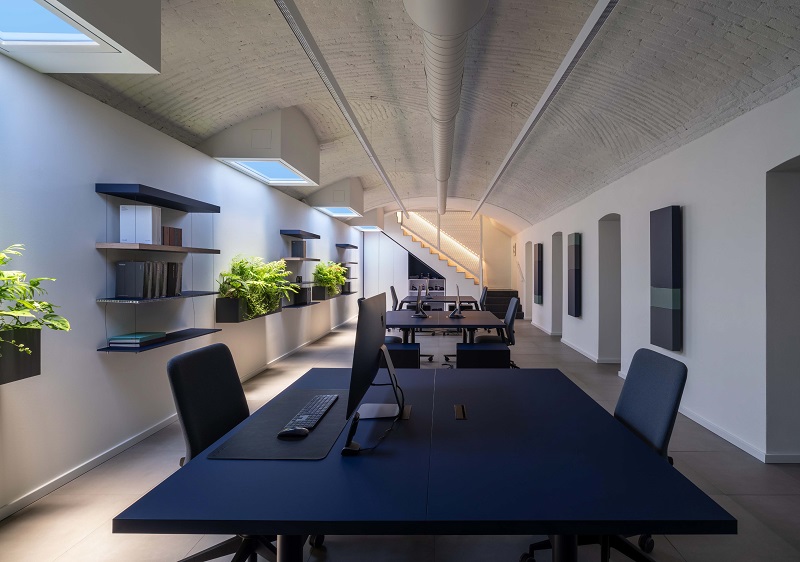
A well-lit mixed-use basement by CoeLux
CoeLux’s Smart Sky feature recreates the passage of time from sunrise to sunset, with colors and light intensity gradually shifting throughout the day. Their 45 LC and HC models also have a Sun & Moon feature, which allows the skylight to produce artificial moonlight for nighttime scenes.
Other vendors offering virtual skylights include:
- LED Skylights (SuperBrightLEDs.com)
- Innerscene
- Artificial Sky
When searching for artificial sunlight products, here are search terms to use to find as many options as possible:
- Artificial Sunlight
- Virtual Skylights
- Artificial Skylights
- LED Skylights
- Virtual Sunlight
Also see:
- Building an Artificial Sun that Looks Unbelievably Realistic (by DIY Perks)
- Shining a Light on Winter Depression (Harvard Health Publishing)
- The 8 Best Light Therapy Lamps of 2023, Tested and Reviewed (Verywell Health)
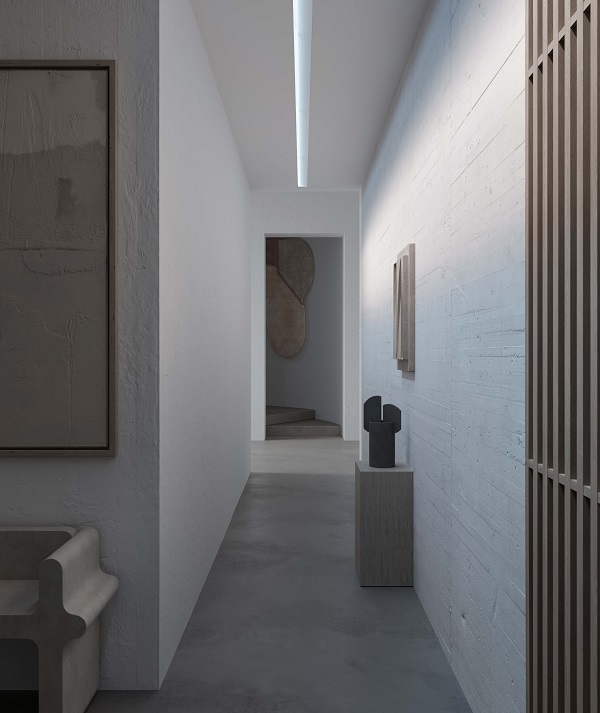
CoeLux Skyline product lighting up a long hallway
Dynamic Outdoor Scenery Virtual Windows
Another type of virtual window we expect that will grow in popularity in coming years is large dynamic digital screens with HD realistic imagery. Virtual windows that use high-resolution displays and advanced imaging technology are primarily used to create stunning HD streaming imagery of outdoor scenery like cityscapes, landscapes, and beaches.
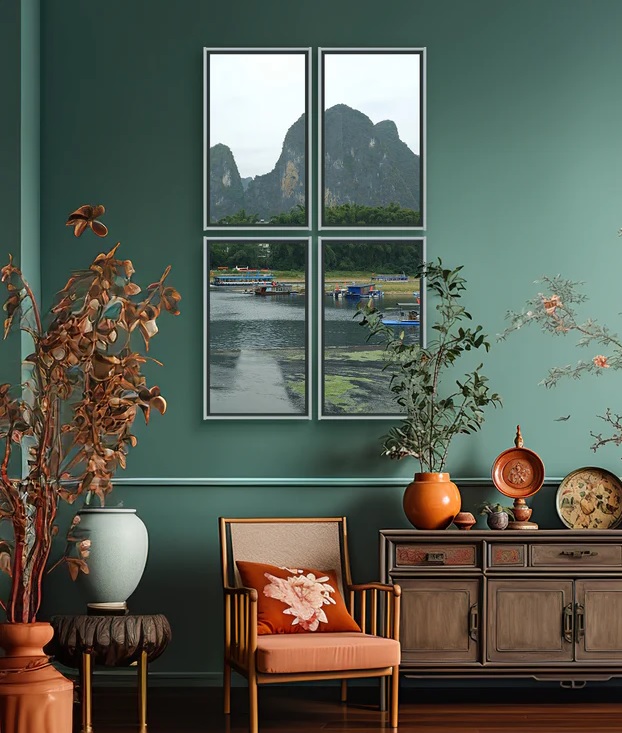
A multi-panel virtual window display by Atmoph
Increasing numbers of virtual window installations are incorporating multiple digital displays that emulate multiple window frames for large dramatic visual statements. The primary goal of this type of virtual window is to make interior spaces more captivating using dynamic imagery with either accompanying audio or complementary music. A powerful feature is the ability to change the scenery with a simple click, which can help set the atomosphere to whatever mood or location you desire.
To get a sense of experiencing a virtual window with dynamic outdoor scenery be sure to browse Atmoph’s collection of views, which all have preview buttons.
LiquidView
LiquidView is a new innovative entrant in the dynamic virtual windows space that is set to elevate the capabilities of virtual windows, as well as fuel consumer awareness and adoption rates. Given their partnership with Leon Speakers, their solution is now an attractive option for professionally designed interior spaces that will likely become a must-have feature for many affluent homeowners.
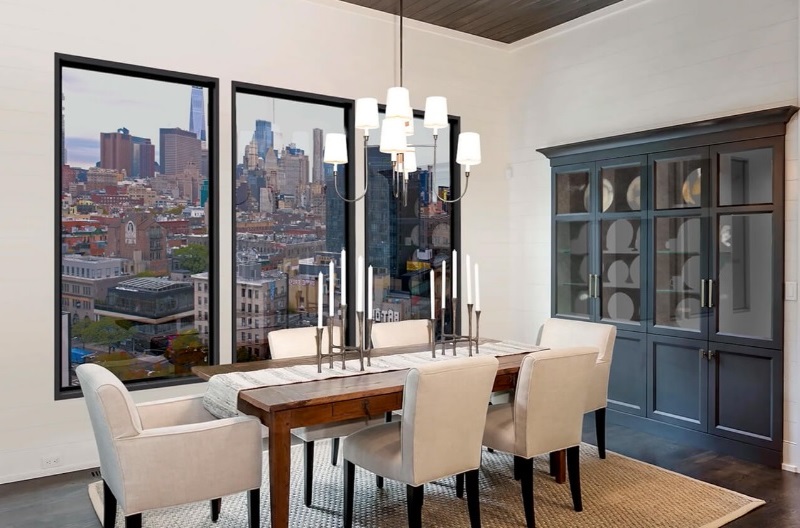
Elegant dining room with a 3-paned panorama virtual window by LiquidView
Their virtual window screens use Sony technology comprising of a 75-inch commercial-grade 4K HDR display. Though their screen technology and design aesthetics are obviously key elements of their product, we are most enthusiastic about their approach to streaming digital imagery.

A hi-res video camera set up by LiquidView to capture nature
Not only do their screens offer exceptional image quality and realism, they are making the experience more immersive by providing breathtaking outdoor scenes with 24-hour cycles, synchronized with your local time zone. A key focus of LiquidView is to bring the beauty of the outside world into your home effortlessly and elegantly. Their visual programming also incorporates the concept of “unexpected events“, which adds an element of intriguing randomness to the experience.
Liquidview believes that virtual windows will become ubiquitous in the future, and their technology will provide a new perspective towards the way we live, offering a new means of escape and inspiration.
Displace TV
Displace TV is another innovator to keep your eye on as they are in the process of releasing a truly wireless TV screen that can be mounted easily on flat walls or glass windows using proprietary suction-cup technology. The 55-inch 4K display weighs under 20lbs and uses swappable batteries that can be replaced while the screen is still operating.
The TV is designed to be free from cords, wires, and antiquated remote controls, providing a more user-friendly and clutter-free viewing experience. The TV device is also modular, meaning that multiple screens can be connected together to create larger, higher-resolution displays. The advanced user interface offers voice, touch, and computer vision-based gesture controls, allowing users to interact with the TV in more intuitive ways. The TV is also geared to stream live content, making it a smart device that be used for more than just entertainment.
Though Displace TV has not positioned their product to be the basis of next-gen virtual digital windows, their technology certainly will be applied in many ways the firm never envisioned.
Also see:
Other examples of virtual windows with dynamic outdoor scenery:
DIY Virtual Windows
With the growing number of DIY videos and social media threads asking about affordable ways to create a virtual window, there is clear market demand for virtual windows at all price points. Keep in mind that most of these examples require advanced DIY skills. However, some could be used as blueprints in partnership with a trusted handyman with the appropriate skillsets. Another approach would be to share a DIY video of interest with a local reputable home automation firm to see if they could do something similar for your home.
Here are a few of the most popular examples of DIY virtual window projects often cited:
- Livestream Virtual Window to the World
- Artificial Sunlight with a Powerful LED Light & Disc
- A Basement Virtual Window with 3 Large TV Screens
Livestream Virtual Window to the World
This video by Alex Shakespeare demonstrates how the inventor transformed a small, drab hallway window into literally a “window to the world” with an encased flatscreen monitor that displays livestreams from various cities around the world. His creative method of selecting the livestream source is by moving a small magnetic plane around a wall-mounted map of the world in his hallway. Another advanced feature implemented is a motion sensor that tracks the viewer’s position in front of the frame, to give a false sense of perspective when moving around in front of the “window”.
“Window to the World” Demo (by Alex Shakespeare)
Artificial Sunlight with a Powerful LED Light & Disc
In this video by DIY Perks, host Matthew Perks demonstrates how to build an artificial sun that mimics natural sunlight. By using a large parabolic reflector, the light rays of a powerful LED bulb can be collimated to appear parallel, similar to sunrays. Perks recommends a high-power LED with a CRI of at least 90 and a color temperature of 5600k. He also goes the full distance by emulating a blue sky effect by using a colorized watertight chamber. The genuine positive reaction of the brilliant inventor experiencing his creation is a testament to the strong market potential this type of product has.
Building an Artificial Sun that Looks Unbelievably Realistic (by DIY Perks)
A Basement Virtual Window with 3 Large TV Screens
In this video by Drew Builds Stuff, host Drew Anger gives a detailed tutorial on how he created a huge multi-paneled virtual window in his basement office using three large TV screens. Anger does an excellent job of showing the steps on installing three portrait-mode flatscreen TVs on a large wall that most competent professional handymen and expert home DIYers could easily follow.
However, the portion of the video where Anger focuses on the best media streaming solution demonstrates a market need for an affordable media player/computer to support hi-res “multi-panel virtual windows” more seamlessly. For this iteration of his multi-panel virtual window, he had to rely on using three separate USB sticks with the same video files. Anger plans to incorporate a better processing unit in the future with more functionality, including possibly adding a dedicated camera to create a live feed of his backyard.
Building a Window with 3 Huge TVs (by Drew Builds Stuff)
Also see:
Benefits of Having a Virtual Window in Your Home
Fake windows have always represented a creative way to make dark, windowless rooms more interesting and comfortable. Now with more advanced lighting and display options, virtual windows are quickly evolving to deliver benefits previously unanticipated.
Virtual windows offer a multitude of benefits that can enhance the aesthetics, functionality and overall wellness of your interior living spaces. Additionally, they can often be a more convenient choice than a real window without compromising privacy, security or insulation.
Virtual window benefits can be grouped into the following inteer-related categories:
Improved Health & Productivity
Adding a virtual window or artificial skylight to an otherwise dark space can be beneficial to one’s overall health. Light has been proven to be therapeutic by causing chemical changes in the brain to improve mood, correct Seasonal Affective Disorder (SAD) and ease other forms of depression.
Enhanced artificial lighting can also improve productivity for remote workers by reducing eye strain, as well as lifting one’s mood and reducing stress levels.
Enhanced the Aesthetics
First and foremost, virtual windows can provide a sense of spaciousness by creating an illusion of depth and wide-angle views. This is especially valuable for rooms without access to natural light or those with limited outside views.
Virtual windows can also add a touch of elegance and sophistication to any room, a perfect way to enhance the aesthetics of your home. They can seamlessly complement various interior design styles and themes, allowing you to create a desired ambiance in your living spaces. With a wide range of scenic views to choose from, virtual windows offer endless possibilities to transform your home. Customizable with personal photos, artwork or livestreams, they can provide a convenient option to update the look and feel of your home.
Virtual windows also allow you to alter the reality of your surroundings by placing your home in an entirely different virtual environment. Transform a basement apartment to a modern Pied de Terre with a beachfront view. If trees and nature are your passion, perhaps a view of a rolling hillside or verdant forest would enhance your otherwise drab decor. If the view from your actual window is somewhat dismal, you can install a virtual window for a magnificent cityscape that would rival any mid-city high-rise penthouse.
Architecture can have limitations which often results in having to sacrifice natural light or breathtaking views in your space due to building codes or adjacent strictures. Virtual windows allow you limitless possibilities on what you can experience from any room in the home, giving you an escape whenever you need to drift away.
Biophilic Design: Bringing the Outdoors Inside
Dynamic virtual windows can enable you to experience the beauty of nature from the comfort of your own home. By bringing the outdoors inside with the illusion of natural light and realistic views, virtual windows can foster a sense of connection with nature, improving mood and overall well-being.
Not only can virtual windows create a sense of openness and expansiveness, but they also have the power to reduce stress and improve your mental well-being by bringing the calming effects of nature and biophilic design into your home.
High-quality, innovative programming can simulate various calming landscapes like beaches, forests, and wind-swept open fields to your living space with the click of a button. You can now transform any room with limited natural light or views into a serene oasis.
Even an underwater effect can be created with an oceanscape view that gives the appearance of an underwater view of a world-class aquarium that showcases marine life and aquamarine water with the sun’s rays trickling down from above. An underwater atmosphere would be especially fitting for a persistently dark, subterranean basement.

Screenshot of the Monterey Aquarium Live Jellyfish Cam
Where Can You Purchase a Virtual Window?
Although many well-skilled enthusiasts have taken to building their own virtual windows using computer screens and other technical means, it is possible to purchase readymade virtual windows from several vendors.
LED Lightboxes
- 40 Visuals Thin LED Light Boxes
- Blue River Digital
- Custom Printed Dimmable LED Light Box Panels (SuperBrightLEDs.com)
- The Lightbox Shop LED Light Box Signs
- Prosky Panels
- Unibox LED Lightboxes (UK)
LED Skylights
- LED Skylights (SuperBrightLEDs.com)
Artificial Sunlight
Dynamic Outdoor Scenery
Commercial Inspiration
Frequently Asked Questions
How much does a virtual window cost?
The cost of virtual windows can vary dramatically based on their size, resolution, lighting and other features. As a starting point, LED light boxes and panels can be purchased for less than $100. Backlit hi-res translucent photographic frames can cost several hundred dollars.
DIY projects using flatscreen TVs will likely costs in the range of $1,000 to $3,000. However, larger and more advanced commericial models and products can easily exceed $10,000. It’s important to research and compare prices from different manufacturers for the best price for the features you desire.
Here are more examples of current pricing:
- LiquidView’s virtual windows range in cost from $25,000 for a single panel screen, to $100,000 for a three screen installation.
- CoeLux pricing ranges from $11,280 to $98,400, where the CoeLux 45 HC is the most expensive product and the CoeLux LS is the least expensive product.
- A wireless Displace TV screen with media processor box costs $3,000, while a 4-screen configuration costs $9,000.
How do virtual windows compare to traditional windows in terms of energy efficiency?
Virtual windows can be more energy-efficient than their traditional counterparts by the mere fact that virtual windows prevent heat or cold from seeping in, which reduces the load of an HVAC system. However, some virtual window installations require cutting into the drywall which can reduce the insulation rating. Net energy efficiency will also be affected by how much power a virtual window requires, and how often and continuous it runs.
Closing Thoughts
Virtual windows offer a unique and innovative way to transform interior spaces. With a wide-range of options and price points, virtual windows are a creative and resourceful way to revitalize the aesthetics of your home, such as bringing the outdoors inside, and creating a soothing and refreshing atmosphere.
Virtual windows that specialize in artificial sunlight, such as virtual skylights, can also provide invaluable benefits such as improved health and increased productivity for remote workers within their home offices.
Related Articles
- How to Protect Your Indoor Furnishings from UV Rays
- The 411 on Phantom Screens: A Profile in Innovation
- How to Choose UV Window Film for Your Home
- The Many Uses and Benefits of Shade Sails for Your Home
- 8 Spa Décor Ideas to Make Your Home More Comfortable & Relaxing
- How to Create an Allergy-Free Environment in Your Home
| Purgula is reader-supported. When you click on links to other sites from our website, we may earn affiliate commissions, at no cost to you. If you find our content to be helpful, this is an easy way for you to support our mission. Thanks! Learn more. |

